Glass Prism | Interview | “Poe gave us our path”
Glass Prism’s 1969 album, ‘Poe Through The Glass Prism,’ was groundbreaking as one of the earliest concept-based rock albums. Guerssen Records is now introducing reissues of both this seminal album and their follow-up, ‘On Joy And Sorrow.’
These albums, originally released in 1969 and 1970 respectively, epitomize the band’s innovative blend of Edgar Allan Poe’s poetry with psychedelic rock. ‘Poe Through The Glass Prism,’ one of the earliest concept-based rock albums, achieved chart success with its single ‘The Raven,’ while “On Joy And Sorrow” delves into heavier sonic territories. With swirling organ and piercing fuzz-wah guitar, both albums are now available as LP reissues from Guerssen, complete with liner notes by Plastic Crimewave and rare photos.
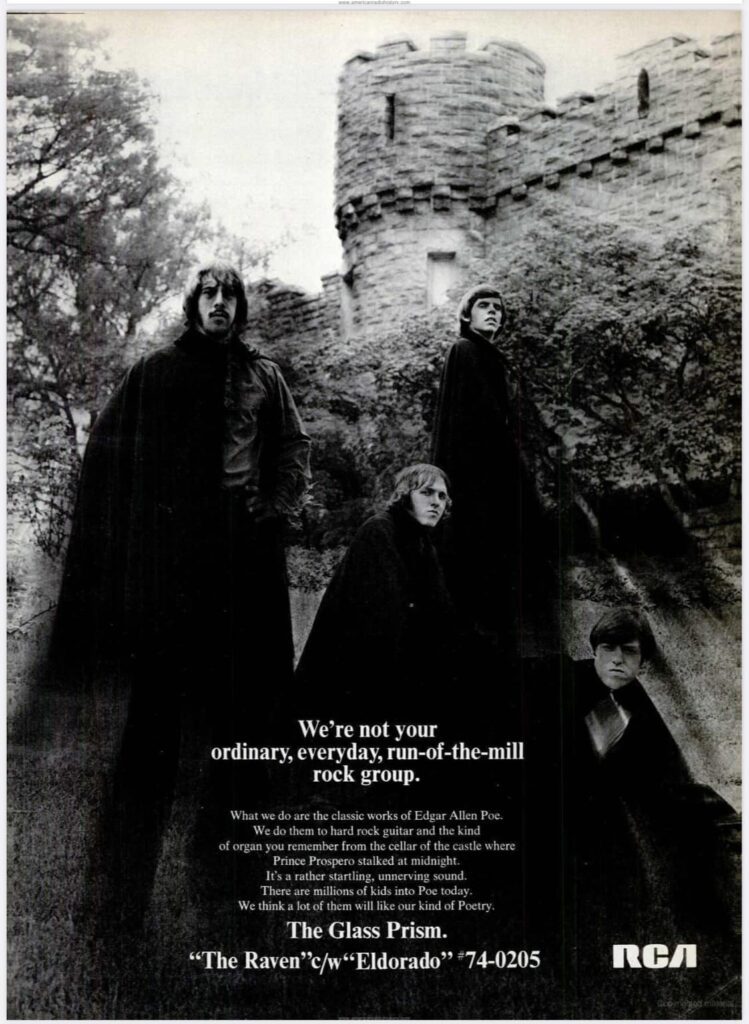
“Poe gave us our path”
Are you looking forward to the Guerssen reissue?
Tom Varano: RCA Records from America signed us in 1969. They released two albums worldwide, ‘Poe Through The Glass Prism’ and ‘On Joy And Sorrow’ on vinyl, 8-track, and cassette. Bandiera Records from South Korea signed us in 2010, releasing both of our RCA albums worldwide on CD. Sony Music from America signed us in 2021, releasing both albums worldwide on every internet platform. Guerssen Records from Spain signed us in 2023. They will release both of our RCA albums worldwide on vinyl in June 2024. We are thrilled, and we know our fans are waiting for our albums to be available on vinyl once again after all these years. The albums will be packaged and released exactly as recorded, with additional liner notes written by rock journalist Steve Krakow. We have developed a great relationship with Alex Carretero of Guerssen Records.
How did you first get interested in music, and what were some of the early influences that sparked your interest?
My mother was a singer, and my father was a musician who played trumpet and harmonica. My uncle played guitar and gave me my first acoustic guitar.
Listening to early rock and roll music was thrilling—Elvis, Chuck Berry, Jerry Lee Lewis, Little Richard. I was inspired to play their songs, so I took guitar lessons.
My first teacher was Enzo Liva, who taught cello at Wilkes College in Wilkes-Barre PA. I was his only underage student, and he taught me classical-style guitar. We played duets with guitar and cello. After two years, he introduced me to Joe Bednarik, a jazz guitarist who taught at a local music store. Joe taught me jazz chords and improvisation. We’d take standards like ‘Stardust,’ and he’d have me create unique chords and improvised melodies. I thought I’d be a jazz guitarist forever. I was even accepted at the Berklee School of Music when I was a junior in high school. Then came The Beatles, and that changed my direction, and perhaps everyone’s. My rock band became my life.
Would you like to share about your upbringing? Where did you grow up, and what was daily life like during your teenage years?
I grew up in Kingston, PA. My mother sold cosmetics, and my father was an insurance agent who also did estate planning. He owned a coal truck that I sometimes worked on. I’d also take phone calls for my parents’ businesses and started booking gigs for my band. I attended Catholic schools for 12 years.
My best friend was George Fox. We lived around the corner from each other and did everything together—riding bikes, shooting bow and arrows, playing football and baseball, and going to amusement parks. I disliked watching TV except for American Bandstand because I could hear music and see the stars. I got a morning paper route to save up for a tape recorder, which cost $60. My goal was to record songs off the radio and figure them out—find the chords, the lyrics, and learn to play along.
When I was 12, George’s mother remarried, and he moved to Berwick, PA, about an hour away. I thought I wouldn’t see him until summer, but he called me up and asked if I’d go to Berwick to play with him and Steve Bond, who played drums. Although I knew George played piano, I had never heard him play. My dad drove me to Berwick one Friday, and I stayed at George’s for the weekend. We worked on a dozen songs, and George’s great voice shone as we performed tunes like ‘Summertime,’ ‘Georgia On My Mind,’ and ‘What I Say,’ along with instrumentals like ‘Walk Don’t Run,’ ‘Perfidia,’ and ‘Apache.’
How did your first band, The El Caminos, come about? How did you originally meet the members of the band?
The three of us, without a band name, would do private parties, Elks Clubs, Lions Clubs, and American Legion Halls. It was George’s step-dad, who happened to be a drummer, who suggested we should do a teen dance.
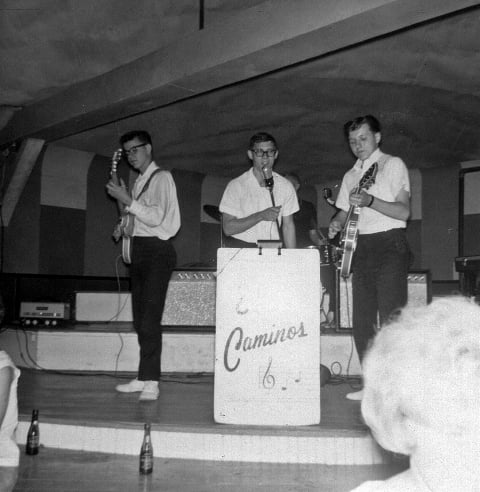
So we added Carl Siracuse on guitar, who went to school with me, and Jim Shrader on sax and bass, who went to school with George and Steve. Steve came up with the name El Caminos from his Spanish book, and we rented the West Side Park Pavilion. This was a venue for big bands like the Dorsey Brothers, Glen Miller Orchestra, and Duke Ellington. We were the first rock band to play at this place. We got some friends to collect money at the door and sell soda and snacks. We made money, and the kids came and loved it. So every week, the place was packed with 800 or more kids dancing and having fun. Their parents would drop them off and then pick them up. Most were too young to drive, but the older guys with cars were not permitted to come in. George’s dad was at the door and was strict about older guys who might cause trouble or be interested in the young girls. That made it way easier for us to become friends with the girls. The band thing was a draw for sure.
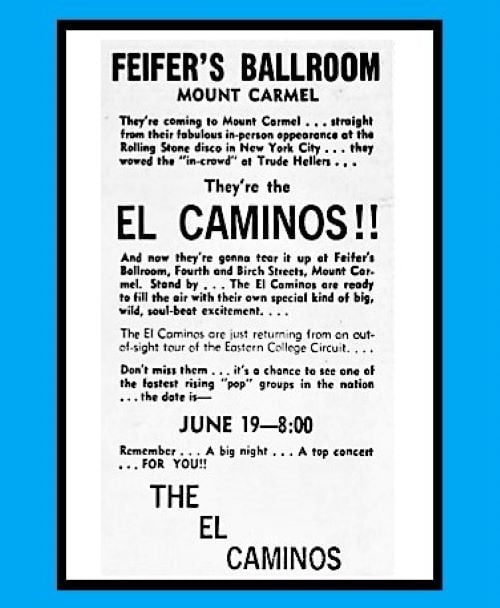
Were there a lot of lineup changes?
Here are the lineup changes by years:
1960-1963
George Fox – piano, vocals
Steve Bond – drums
Tom Varano – guitar, vocals
Carl Siracuse – guitar, vocals
Jim Shrader – sax, bass, vocals (joined 1962)
1963-1966
Steve Bond – drums
Tom Varano – guitar, piano, vocals
Carl Siracuse – guitar, organ, vocals
Jim Shrader – bass, sax, vocals
1966-1971
Augie Christiano – bass, vocals
Rick Richards – drums, vocals
Carl Siracuse – guitar, organ, vocals
Tom Varano – guitar, vocals
1971- 1976
Louie Cossa – bass, keyboards, vocals
Tom Varano – guitar, piano, vocals
Rick Richards – drums, vocals
2007-2011
Louie Cossa – bass, guitar, keyboards, vocals
Tom Varano – guitar, piano, vocals
Augie Christiano – bass, vocals
Rick Richards – drums, vocals
2011- present
Lou Cossa – bass, keyboards, vocals
Tom Varano – guitar, piano, vocals
Rick Richards – drums, vocals
Mike Mercuri – Hammond B3 Organ, piano, vocals
Did you record anything under the El Caminos?
The El Caminos recorded a number of songs. Here are the song titles, songwriters, and A/B sides:
With George, Steve, Tom, Jim, Carl:
‘Andrea’s Song’ – Tom (A) / ‘My 327’ – George (B)
‘Do You Love Me’ – (cover) (A) / ‘Summertime’ – (cover) with Jim on sax (B)
With Steve, Tom, Jim, Carl:
‘A Little Louie’ – Tom (A) / ‘Never Change’ – Jim (B)
‘Storm Warning’ – Tom (A) / ‘We Stand Alone’ – Tom (B)
With Tom, Carl, Rick, Augie:
‘Bulletin’ – Tom (A) / ‘Exodus’ – (standard) (B)
‘Got To Have Her’ – Tom (A) / ‘It Could Be’ – Tom (B)
‘I Knew Him’ – Carl (A) / ‘This Day’ – Tom (B)
Did you do a lot of shows early on? Tell us about the clubs you played and what your repertoire consisted of.
In the ’60s and ’70s, there were teen dance halls like Junior Mechanics, Robert Burns, and Glenburn Men’s Club. We played high school events at places like Dunmore, West Scranton, Scranton Central, and Kingston Catholic. We performed at colleges such as Wilkes, Kings, Bucknell, Cornell, and State University of New York, as well as frat parties at dozens of colleges. Our gigs also included clubs like A Shot in the Dark, White Horse Inn, Tuesdays, and What’s Happening, and concert venues like Hershey Farm Show Arena, Scranton Cultural Center, and Bowman Field.
Our repertoire consisted of original songs and covers from the groups we loved, such as Vanilla Fudge, The Illusion, Three Dog Night, Grand Funk Railroad, Jimi Hendrix, Cream, Uriah Heep, The Beatles, The Rolling Stones, Elton John, and Led Zeppelin.
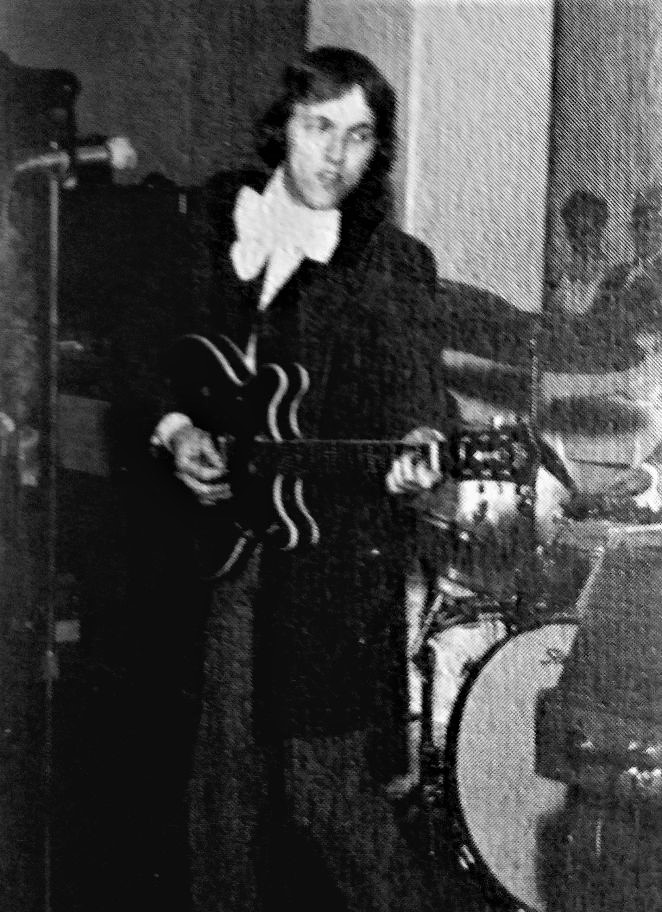
When was Glass Prism officially born? What’s the story behind the band name?
The Glass Prism name and birth came about when we signed with RCA. Our first name, El Caminos, did not fit our concept album of Edgar Allan Poe lyrics (poems) set to our original rock music. Carl’s sister came up with Glass Prism from her science book. Thus, the album title ‘Poe Through The Glass Prism’ fit the concept perfectly.
How did you manage to get a two-record deal with RCA in 1969?
RCA liked our demo and signed us immediately after hearing just two songs. They gave us a two-album deal and one single with options for more.
Tell us about your instruments, amplifiers, and other gear you had in the band.
We carried our own PA system, an Altec Lansing, consisting of 6 speaker cabinets, a 400-watt amp, and a soundboard. We had several guitars, including a Les Paul Custom, Gretsch Country Gentleman, and Guild, along with a Rickenbacker bass guitar. For amplification, we used Marshall amps and speakers for guitars and bass. Our setup also included a Hammond B3 organ with Leslie, an electric piano, and Slingerland and Ludwig drum sets.
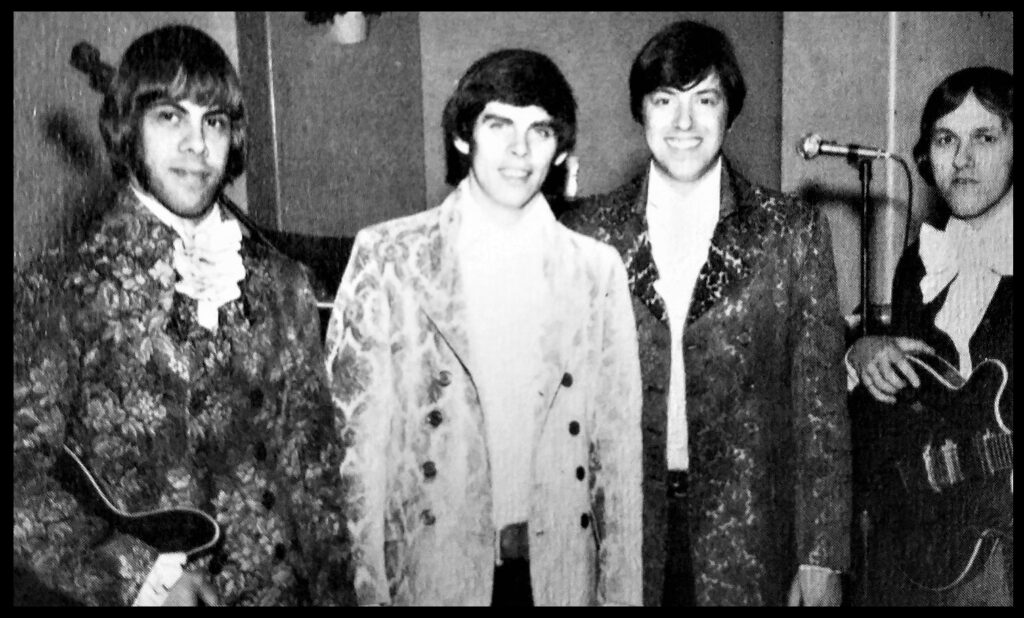
Did you have a manager?
Our manager was Mort Lewis. At that time, Mort managed Simon & Garfunkel, Blood, Sweat & Tears, and us. Mort came to see us at a club called Tuesdays, where we drew about 800 screaming fans who stopped everything to come up to the stage and listen to us do our Poe songs. They loved our Edwardian outfits.
Tell us about the recording of your debut album ‘Poe Through the Glass Prism’. Where did you record it? What kind of equipment did you use, and who was the producer? How many hours did you spend in the studio?
We recorded ‘Poe Through the Glass Prism’ at Les Paul’s studio. Les was the engineer, and Gene Weiss was the producer, but Les really did most of the producing. This was his studio, and he knew how to make things work. We stayed at Les’s home, which was attached to his studio. We were there for three days, sleeping in his bedrooms and eating in his kitchen; it became our home. One day, we headed into NYC for a photo shoot for the album cover. We ran through all 11 songs in just one or two takes. Rick used his Slingerland full double bass drum set, Carl played our Hammond B3 organ, Augie played his Rickenbacker bass through his Marshall 100-watt bass amp, and I used my Gibson Les Paul Custom that I had just bought two months before the sessions. I used my 100-watt Marshall guitar amp, and I also used Les’s baby grand piano. There were no vocal overdubs, no pitch correcting, and no additional musicians or vocalists. One evening, we recorded the music tracks for ‘The Raven.’ It was late, so we went to bed. Early the next morning, Les woke up Augie, gave him a cup of coffee, and said, “Let’s sing that song.” Augie went into the studio, sang all four verses of a four-minute song in one take. That is what you hear on the album. It became our first single, with ‘Eldorado’ on the flip side.
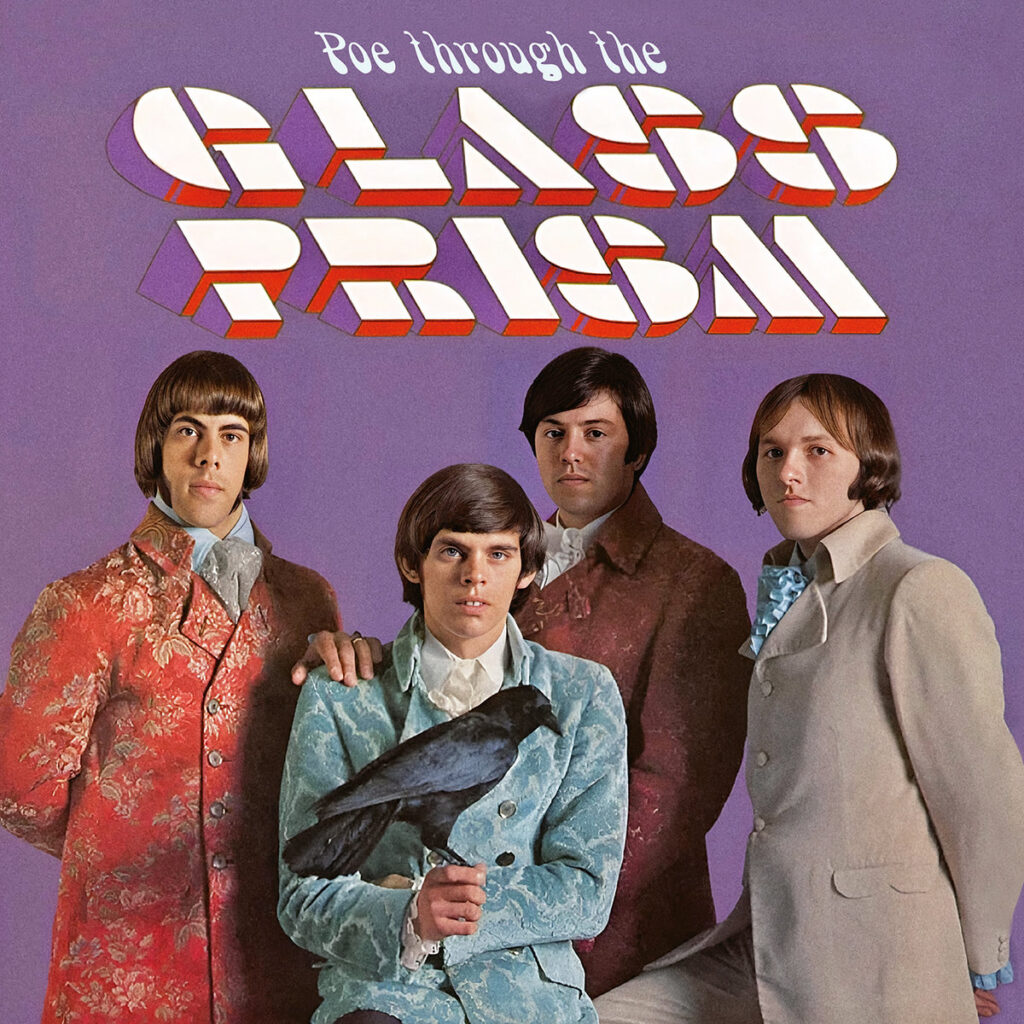
“Our interpretations represent Poe’s thoughts in our music”
Please share your recollections of the sessions. What were the influences and inspirations for the songs recorded?
The sessions were quick. We had been playing these songs for months, and we were ready. We spent some time in various studios in NYC, Philadelphia, and others. Though we weren’t very experienced in the studio, we were comfortable, and Les and Gene were great to work with.
Our influences were everyday life—the things you read, the songs you hear, the people around you. In the case of the ‘Poe’ album, it was his words, his stories. The emotions were already in writing. We just had to write music to them. Our interpretations represent his thoughts in our music.
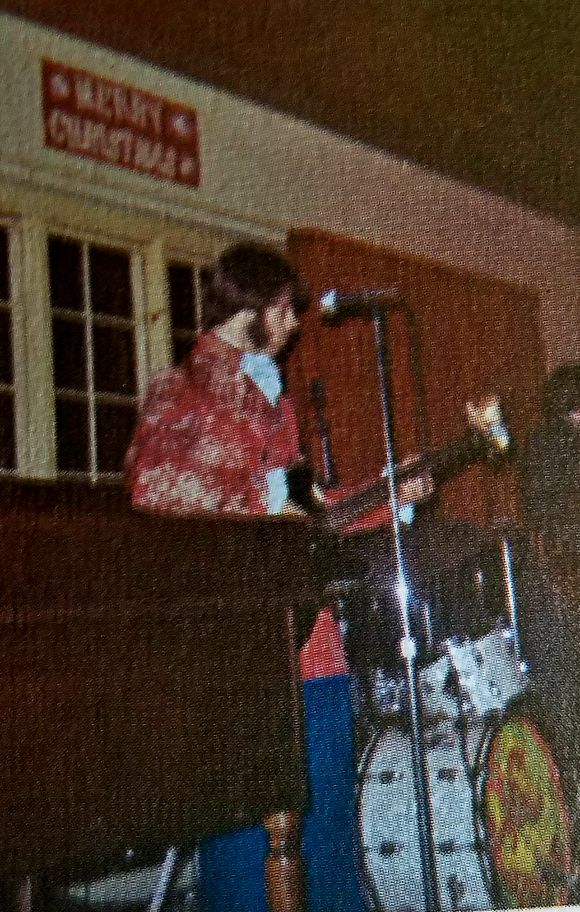
Would you share your insight on the albums’ tracks?
‘The Raven’:
Although ‘The Raven’ has 18 verses, our live version had eight. For the album, we had to shorten the length to four minutes. Thus, we only did four verses. The opening is instrumental with Carl on Hammond B3 taking the lead, and I’m on piano doing a counterpoint. Augie is playing a specific melodic bass pattern, and his vocals are strong. Rick drives this song perfectly. Many people compare this song to the style of Procol Harum.
‘To-.’:
This is a rocker with Rick and Augie sharing lead vocals with some cool four-part harmony.
‘To One in Paradise’:
This features lead vocals by all of us (one verse each) and a recited verse by Rick.
‘Eldorado’:
This features Rick on lead vocals with four-part harmony and is the flip side of ‘The Raven’ single. This one was going to be the A side, but the more famous Poe poem ‘The Raven’ won out.
‘The Conqueror Worm’:
Augie is on lead vocal, and I get to play piano. Everyone is on their best game.
‘A Dream Within a Dream’:
This features Augie with some more four-part harmony. Wah-wah pedals were new at this time, but they fit this song well. Great melody and a haunting vocal by Augie.
‘The Happiest Day, the Happiest Hour’:
We get to rock out on this one with some crazy guitar solos.
‘Alone’:
This one starts with a fuzz bass solo and shout singing by Augie and Carl. Then it breaks into a ballad with Rick taking over the lead vocal.
‘Beloved’:
Another Rick lead vocal with nice harmony.
‘Hymn’:
This one is all Rick singing a love song. It has a jazz guitar solo and a nice organ solo by Carl.
‘A Dream’:
Two guitars here. Carl and I have some fun with this one, and I’m on lead vocals with the guys doing harmony.
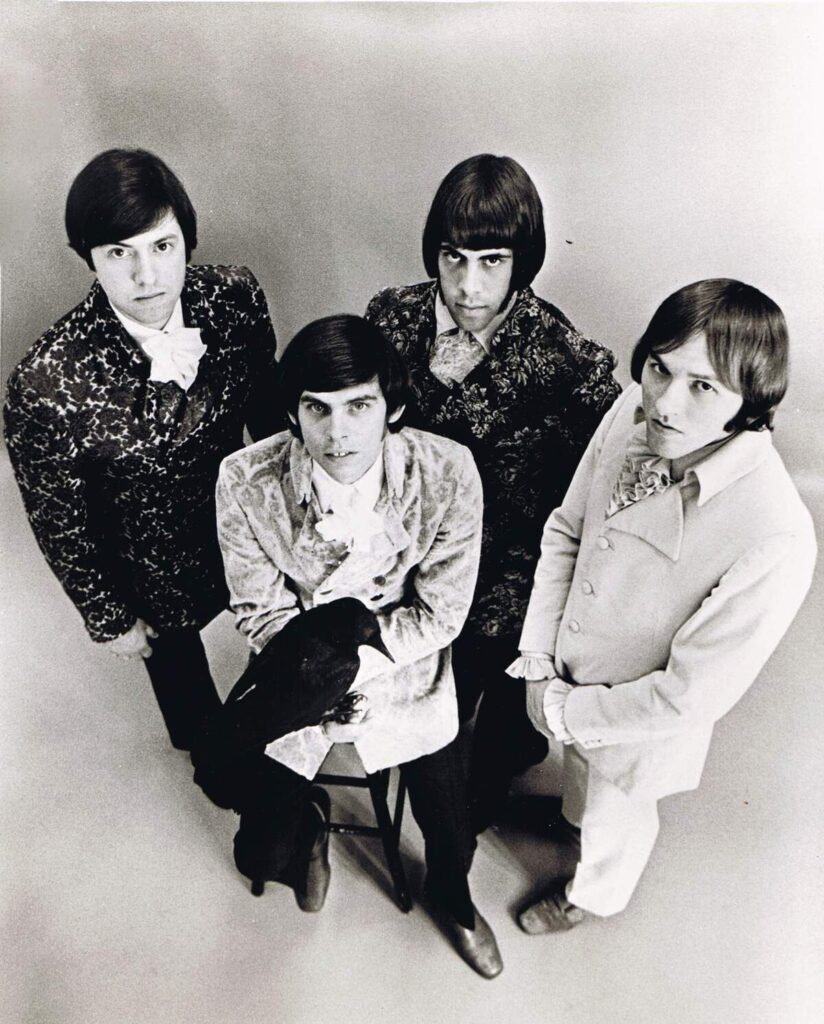
Glass Prism had a unique sound that combines classic works of Edgar Allan Poe with hard rock guitars and pounding drums. How did this concept come about, and what inspired you to blend Poe’s poetry with rock music?
One day Augie called me and said he had this idea to put our music to Poe’s poem ‘The Raven.’ I said, “Let’s get together right now.” He came to a boutique I owned called The Bedroom, about a half-hour away. I sat with my guitar, and we developed a chord progression and melody. Augie had the organ melody idea for the intro, and I added the piano counter melodies to the bass melody. We got together with Rick and Carl, and they fit right in.
I had a book of all the works of Edgar Allan Poe, including poems, short stories, etc. I thought, ‘Well, let me try one or two.’ I wrote ‘Eldorado’ and a bunch of others. Some I showed the guys, and some we just never got to. Augie also started working on more. We got together and developed complete songs and arrangements that fit us.
We started playing these songs as a complete set as part of our regular gigs. It worked. We would do a set of other people’s songs, take a break, change our clothes, and come out and do our Poe set.
The audience loved it and accepted the fact that these were songs they never heard on the radio. At least not yet.
Can you walk us through the creative process behind adapting Poe’s works into music? How do you approach capturing the essence of his writing while adding your own musical interpretation?
We chose the poems of Edgar Allan Poe that we liked. I think the overall mood of the poem guided the writing of the music. Like any songwriter, sometimes you write the words first, sometimes you write the music first, and sometimes they both happen at the same time with adjustments coming as you move through the story. Poe gave us our path. As rock musicians with a background in the pop culture of the times, we found the songs.
What was the experience like working on this album, especially with legendary producer Les Paul?
When we arrived at Les Paul’s, we walked into the studio first. Our road crew set up the gear as we walked around to check out the landscape. I noted that Les had a bunch of very old guitars hanging in an all-glass room. He told me these were the first electric guitars he built. I was a Les Paul fan and thought he was one of the best guitarists at that time. I asked him to play something, anything. He said, “I had my day, this is your day.” Those words still linger on.
A short time later, we began recording our first tracks. We would go into the booth and listen to the playback. Les would EQ the settings and make our songs sound good. I watched him cut a tape with a razor blade and fit that tape together perfectly.
That recording studio is legendary, and you can see photos in various books about the history of the recording industry.
The album’s release faced some challenges due to external factors such as your manager disappearing and canceled tours.
It’s true that our manager Mort Lewis went missing. Mort was the most famous manager in America at that time. He managed Simon & Garfunkel, Blood, Sweat & Tears, Dave Brubeck, and The Glass Prism. He and Gene Weiss had just launched a new management company, and we were the first group they signed. Industry magazines such as Cash Box, Billboard, and Record World ran articles about us. This new company was to sign the best artists in the industry.
The tour had us opening for Blood, Sweat & Tears and was to begin shortly after our single was released. The music magazines all picked ‘The Raven’ to be a top 10 hit. Our album and single began moving up the charts. RCA was behind us, running ads and financially backing us. They had a big investment in The Glass Prism. Our financial advance was more than anyone else at that time. The tour with Blood, Sweat & Tears would put us in front of thousands of people.
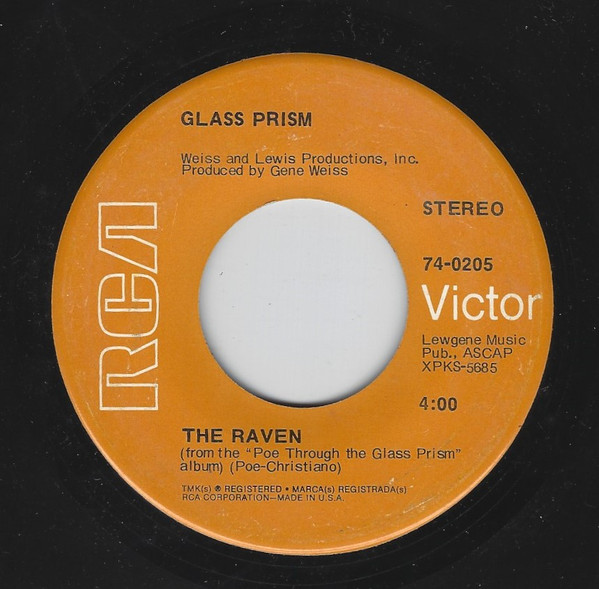
Mort went to Florida. He had a yacht there, we were told. Though I thought it was weird timing, I figured he knew what he was doing. Anyway, after a couple of weeks of hearing our music on the radio and getting lots of gigs, we heard the tour was canceled – something about a problem with David Clayton Thomas. No one could reach Mort. RCA said they would hold off on everything until Mort resurfaced. We waited and waited. He never did. He totally left the industry. A year later, Paul Simon married Mort’s wife. They had a child and later divorced.
Then came the call from RCA to fulfill our contract obligation with a second album. They were going to release another single but opted out. We continued playing gigs but got tired of playing the same songs over and over. We did TV shows, concerts, festivals, but frustration set in.
In 2015, Mort Lewis showed up in Boston. He decided to work with Art Garfunkel. That was not serious, and shortly after, he passed away. We tried, but could never find out what really happened, where he went, or why he left the industry, hanging us out to dry.
After your debut album, you mentioned that the band mutated into an acclaimed power trio. Can you tell us more about this evolution and how it impacted your sound and approach to music?
The organ dominated our Poe music. We liked the power trio idea. Carl joined The Buoys, and Augie moved to New Jersey. Louie Cossa joined Rick and me in 1971, and we rocked until 1976 when I decided to take a break after 16 years of playing for a living.
During those Shenandoah years, we wrote rock songs. We did lots of original music, and when we did other people’s songs, they were usually with our own arrangements. We got back into the studio doing demos, and in 1973, we completed an album at Bell Sound Studios with Seth Greenky and us producing.
What about ‘On Joy and Sorrow’? How would you compare it to your previous album? What are some key differences?
As I said before, during the first few weeks following the release of our first album, our manager Mort Lewis went missing. We were told he went to Florida and was on a yacht and couldn’t be reached. We were scheduled to go on tour with Blood, Sweat & Tears, who had just released ‘Spinning Wheel.’ However, without Mort, who managed Blood, Sweat & Tears and The Glass Prism, the tour was canceled. We waited for Mort to return. The president of RCA said they would pull our ad campaign until they could find Mort. They never did. Mort never came back. No information ever surfaced as to what happened.
After several months, we got a call from our producer Gene Weiss. He said the contract with RCA called for a second album, and they wanted us to be at RCA Studio A in 11 days.
We worked on and played live all of the Poe songs for months before we recorded them for RCA. Now we had 11 days to write 11 songs. We scrambled to put songs together to meet this deadline.
Since the Poe album was a concept album, we decided we might be able to get into another concept album. I had been into Kahlil Gibran, and his “On Joy And Sorrow” theme seemed like the way to go.
We wrote several songs with that in mind, and that became the album title.
Finally, it was time to write our own lyrics.
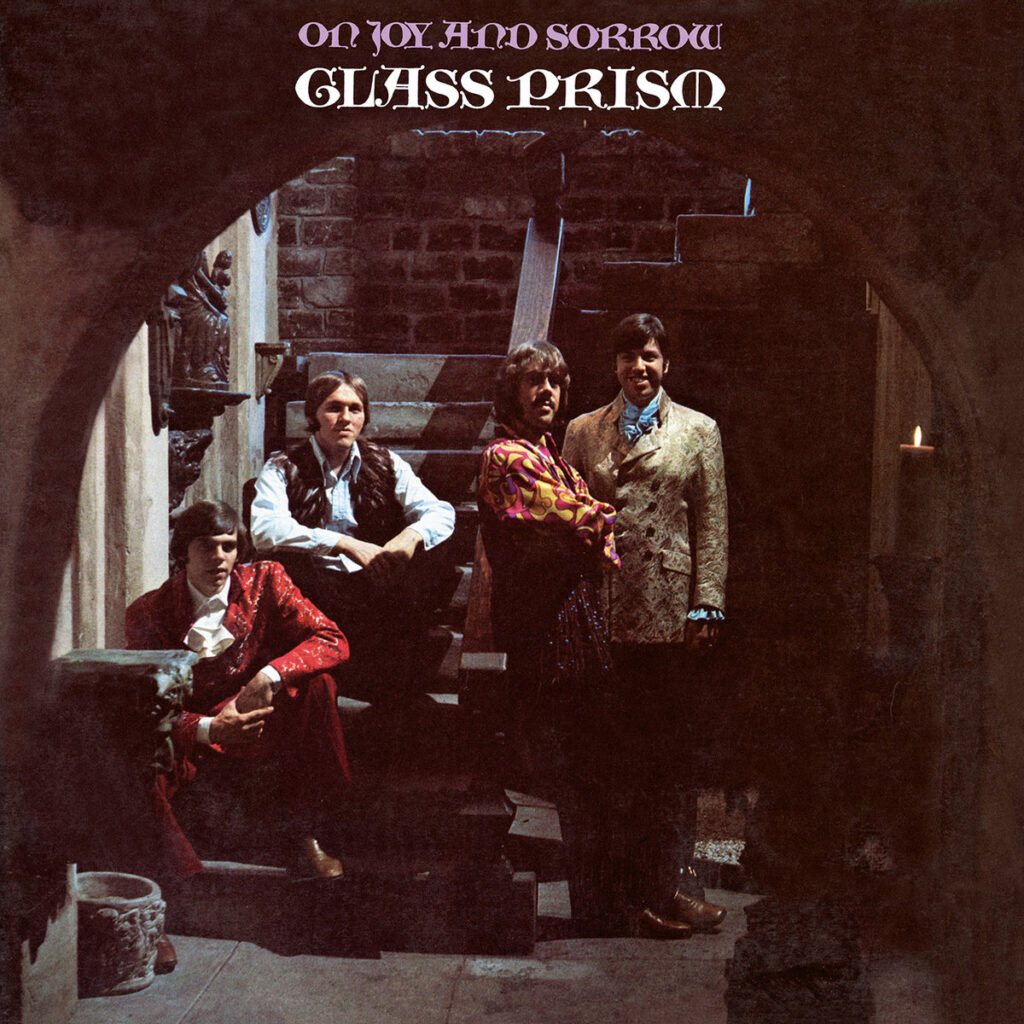
We worked with Mike Moran, our engineer, and Gene Weiss, our producer, along with us. We even wrote in the studio. We were there for three days. During those three days, we went to the village and had a photo shoot at the Fabulous Fakes Museum for the album cover with a photo on the back also.
‘She’s Too Much (Lay Your Body Down)’
This is a rocker and was to be our next single, but RCA gave up on Mort, and thus on us also. In this song, our girl made a mistake and paid for it. The problem – she was too much.
‘Extension 68’
This is a negative song for sure. Rick does a great job on lead. There are two guitars, bass, and drums.
‘What Can We Do’
A bit of a jazz solo opens this song with a sweet melody and nice lyrics. I guess this was the Joy side of the album. Carl and I do our duo vocals.
‘Who Loves Me’
Desperately looking for a lover, Augie mourns. Rick’s drumming is great as usual. Every song on this album has some interesting chord progressions, harmony, and unique lead vocals. This song meets that standard. Everyone gets to sing lead here and there. Harmony is what we do as often as necessary. Guitar solos, organ solos, and we use guitars, organ, drums, piano, and vibes.
‘Nothin’s Wrong Song’
I have the lead on this one, and things get a little crazy. We actually break into another tempo just for fun. The story is a bit confusing. The listener has to figure it out.
‘Maggie Don’t You Hear Me’
Augie wrote a song about one of his girlfriends that he lost somewhere along the way. This was a fun song to play live.
‘She (On Joy And Sorrow)’
This is Rick singing a love song I wrote for my first wife as we were breaking up. This has nice harmony and an interesting chord progression. It’s another one of ours that was sampled by Atmosphere. They call it ‘You Make Me Wanna.’ They used our actual recording to speed it up.
‘I Want To Play’
Yes, it’s about playing in a band even when life gets in the way.
‘Here You Are’
Another sad story. Rick is on lead, plus two guitars, bass, organ, drums. It features an extended organ solo and some nice harmony. This song’s intro riff has been used by The Beatnuts for a song they call ‘Hellraiser.’
‘Reneé’
Augie wrote this one about another girl. Her name wasn’t Renee. Interesting harmony and it moves along. This is the pop song that you think you heard before.
‘I Laugh’
This is Carl on lead. This is the only song he wrote for The Glass Prism. He wrote it in the studio, and we ran through it and recorded it quickly because it was the last song for the sessions. The theme of this song is that no matter what, I Laugh. A great jam song with solos here and there.
What was the songwriting process like for the band? What inspired songs?
Probably like almost every songwriter, you pick up your guitar or sit at the piano and start. The inspiration could be a line you heard in a movie or something you read in a newspaper or book, or just a thought that came to you in a dream or while making love. You might have a chord progression or a melody. You start. You move forward. Eventually, you show it to your bandmates. They jump in. You work on it until it’s finished. You try it out in front of your audience. If they like it, you keep it. You go into the studio and record it. You listen to it over and over until it’s perfect. Well, maybe not perfect but you’re satisfied, sort of, for now. Tomorrow I’ll start over or just write another song that’s even better.
What were some of the highlights of your time in New York City, where you interacted with industry giants like RCA executives and musicians such as Paul Simon and James Brown?
When we first started coming to New York to meet with Mort, Paul Simon would be there. He was always hanging around. When he heard the Poe album, he asked me if we ever thought of writing our own words. I remember going out to dinner with Mort to his favorite restaurant. He told me how he had dinner there with Al Kooper, and that was the day Blood, Sweat & Tears decided to add horns, great jazz players to rock and roll music. On another visit with Gene Weiss, we went to Buddy Rich’s club to see him and his band play. It was great to meet him. We walked out of his club, which was on the second floor. Buddy had a bit of trouble going down the steps because he was drunk, I guess. We also played at a number of clubs in the city just to be seen by writers and industry people. We did a showcase for the RCA executives in a small theater so they could meet us and see what we were about. We were supposed to be their next big group. They had Guess Who, Jefferson Airplane, and of course, Elvis.
You’ve shared the stage with a wide range of artists, from Al Green to Jefferson Airplane. What are some of the most memorable shows you played?
I think playing with any of the major artists of the day was a big deal. Remember, these were the original members. These were the legends. For those who want to see almost everyone we worked with, they are listed on our Bio and Discography. Just email us at hmi67@aol.com. The two I will mention here stand out for a reason. At this point, we were called Shenandoah and playing as a power rock trio: The Guess Who – This concert was at the Hershey Farm Show Arena in Hershey PA in front of 5000 people. We opened as we were a powerful rock trio at this time. The response was great. The Guess Who came on and were doing ‘These Eyes’ and some other laidback material. Within 15-20 minutes, the audience started saying our name. Many people left before The Guess Who finished their set. Three Dog Night – This show was at Bowman Field in Williamsport PA in front of 20,000 people. We did our thing and got a great response. Three Dog Night was also doing some laidback songs like ‘Eli’s Coming,’ ‘One Is The Loneliest Number,’ etc. The audience started chanting ‘Doah, ‘Doah. This became our nickname in the Williamsport area for years and years. I just remember thinking, we can run with the big dogs.
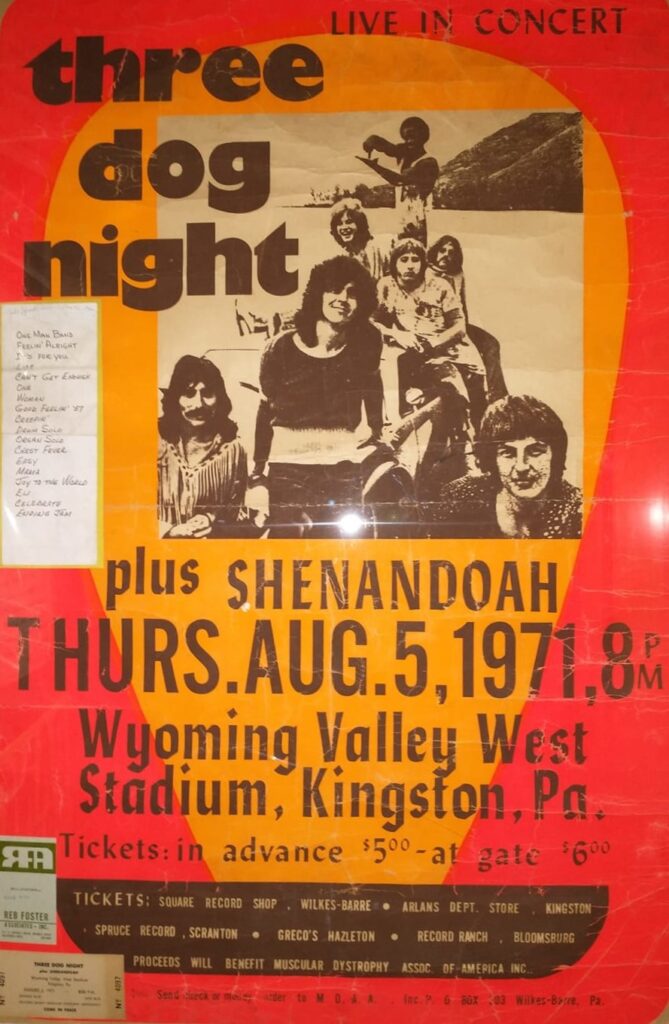
What followed for the band after the second album was out?
A year after the second album, we were tired of doing the same Poe songs and even the On Joy songs. Carl left the group and went with The Buoys of “Timothy” fame, and Augie moved to New Jersey. Louie Cossa took his place, and the power rock trio was born. Shenandoah was the name we chose because we saw it on a sign and liked it. We did our original songs and covers of Led Zeppelin, Cream, Hendrix, Grand Funk Railroad, Blind Faith, Soul Survivors, Deep Purple, Uriah Heep. Most songs were deep cuts, and we created our own arrangements. It was freewheeling and so exhilarating again. Writing songs for guitar, bass, and drums was challenging but so much fun.
Was there a plan to record more back then? Are there any unreleased materials or material that you didn’t record back then, but were newly written at the time?
Songs were written, but not recorded. We were an active working band. We made our living by gigging. We needed to play to pay the bills. The one album Shenandoah recorded was our last recording until 2010.
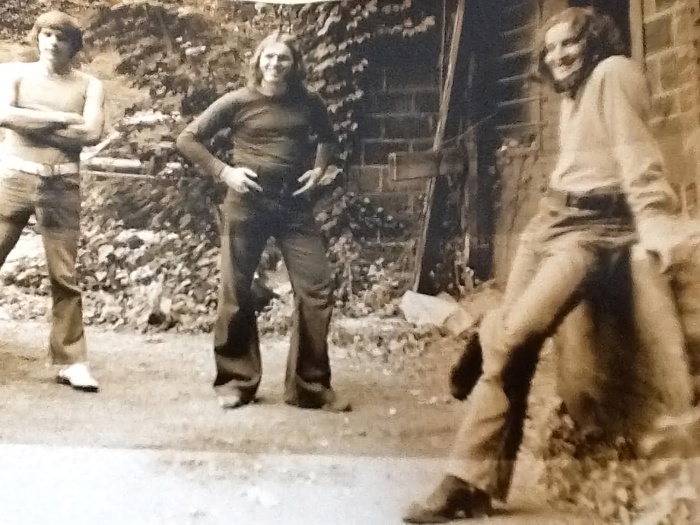
What motivated you to push the boundaries of traditional rock music?
We knew what other groups were doing. We played their music. We studied their process and we were encouraged to join the elite by creating our music.
Did any member participate in any other bands back then? Or later in the 70s?
We worked together exclusively until 1976. At that point I had been in this group as band leader since 1960. I moved to New York and started a booking agency and management company. Louie toured with The Box Tops and then Dakota, who recorded for Polygram and toured with Queen. Rick worked with some local groups. Augie was asked to play with Leslie West, but turned it down.
What did you focus on in later years?
Since 1976, I’ve been involved with numerous artists, bands, and entertainers across various genres. I transitioned into roles like producer, arranger, and manager. Additionally, I managed several businesses, including my father’s insurance company and an employment agency. I oversaw multiple entertainment companies until 2015 when I dissolved my last corporation.
I’ve been married for 47 years, and together, my wife and I have four sons and a daughter. We’re proud grandparents to four grandsons and a granddaughter. One of my sons excels as both a guitarist and electrical engineer, while one of my grandsons shows great talent as a drummer.
Did you maintain contact with band members over the years?
Rick, Louie, and I have remained in regular contact. We even had a video interview in April 2024, during which we discussed our latest album, ‘Resurrection,’ as well as ‘Shenandoah Sessions ’73.’ In March 2024, we participated in a radio interview in Philly that featured surprise guests like Vinny Martell of Vanilla Fudge.
“We continued performing gigs, albeit under the name Shenandoah as a three-piece power trio”
After Glass Prism, the band transformed into Shenandoah. What prompted this change, and how did it affect your music?
Glass Prism never truly disbanded. We continued performing gigs, albeit under the name Shenandoah as a three-piece power trio. Despite the transition, our popularity remained strong, thanks to our reputation for delivering top-notch performances. We relished the challenge and enjoyment of each show, akin to walking a tightrope every night.
What about live performances?
Our live performances spanned various venues, including clubs, colleges, concert venues, and festivals. We often served as the opening act for headliners, ensuring a diverse and dynamic concert experience for our audience.
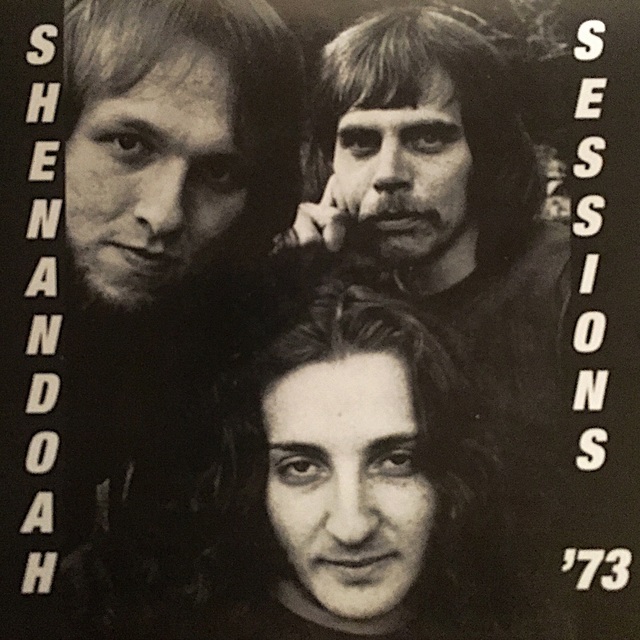
Tell us about the 2012 release of ‘Resurrection.’
In 2011, during a concert at the Mellow Theater in Scranton PA, we premiered a documentary about our journey titled On Joy and Sorrow: The Glass Prism Story. Following the event, Dick Plotkin, the owner of Debra Records, approached me expressing interest in recording us. We collaborated to produce a Poe-themed album featuring rearranged tracks from our first album and new compositions. Additionally, Plotkin included our ‘Shenandoah Sessions ‘73’ album as a double album package, with both albums also available separately.
Looking back, what was the highlight of your time in the band? Which songs are you most proud of? Where and when was your most memorable gig?
Reflecting on my time in the band, there were numerous highlights, from memorable gigs to awards, insightful interviews, and sharing the stage with renowned headliners.
I take immense pride in many of the songs we recorded, including ‘The Raven’ from ‘Poe Through The Glass Prism,’ ‘She (On Joy And Sorrow)’ from ‘On Joy And Sorrow,’ ‘Down The Road,’ ‘Dreamfield,’ and ‘I Used To Wear My Hair Real Long’ from ‘Shenandoah Sessions ’73,’ and ‘O, Tempora! O, Mores!’ and ‘Black Cat’ from ‘Resurrection.’
Among the most unforgettable gigs:
August 1971 – Opening for Three Dog Night before a crowd of 20,000 at Bowman Field in Williamsport, PA.
October 2007 – The Glass Prism’s first concert in nearly 40 years, at the Edgar Allan Poe Historic Site and Museum in Philadelphia.
October 2012 – ‘Resurrection: A Rock Opera’ performed at the Scranton Cultural Center, featuring my son Wade playing his original songs on acoustic guitar.
As for future plans, we’re slated for a video interview at Jody Busch’s Community House, covering our entire ‘Resurrection’ and ‘Shenandoah Sessions ’73’ albums. Additionally, we’re set to appear on an upcoming episode of the Music of America Podcast.
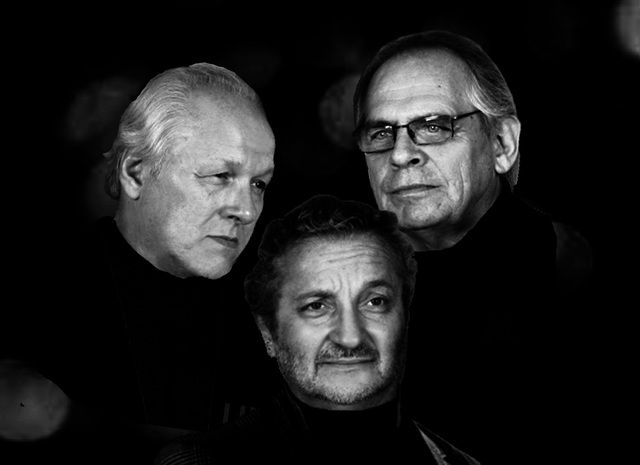
Thank you for your time. The final word is yours.
The album ‘Poe Through The Glass Prism,’ featuring lyrics by Edgar Allan Poe and co-written by Augie Christiano and Tom Varano, has been regarded as a Rock Opera, making it one of the earliest concept-based rock albums. Notably, it stands alongside iconic works like The Beatles’ ‘Sgt Pepper’s Lonely Hearts Club Band’ (May 1967) and The Who’s ‘Tommy’ (May 1969).
Rock journalist Maxim W. Furek recognizes The Glass Prism as forerunners of the Goth movement and originators of “Goth Rock.” Our single ‘The Raven’ is cited as the first true expression of Goth Rock, preceding Bauhaus’ ‘Bela Lugosi’s Dead’ (Small Wonder Records, 1979) by ten years and The Alan Parsons Project’s LP ‘Tales Of Mystery And Imagination’ (1976) by seven years.
Both ‘Poe Through The Glass Prism’ and the ‘Resurrection’ album can be experienced at several Edgar Allan Poe historic sites across the United States.
Our ‘Resurrection’ CD was released on January 19, 2011, coinciding with Edgar Allan Poe’s 202nd birthday. The accompanying ‘Resurrection: A Rock Opera’ Concert took place at the Scranton Cultural Center on October 7, 2012, marking the 189th anniversary of Edgar Allan Poe’s death.
Edgar Allan Poe is credited with writing the lyrics of several songs. The co-writers of the 1969 RCA album ‘Poe Through The Glass Prism’ are Edgar Allan Poe, Augie Christiano, and Tom Varano. For the 2011 Debra Records album ‘Resurrection,’ the co-writers are Edgar Allan Poe, Augie Christiano, Tom Varano, and Lou Cossa.
A brief history of The Glass Prism is featured in Northeast PA’s Happenings Magazine August 2020 issue, in an article titled “On a Band’s Joy and Sorrow” by Christine Fanning.
In June 2023, El Camino tapes from the early ’60s containing ten original songs by the original members were discovered.
Ranked 49 out of 150 artists with the longest gap between album releases on Camara_Azteca’s list, The Glass Prism had a 42-year gap between ‘On Joy And Sorrow’ and ‘Resurrection.’
On Wikiwand’s “Allusions of Poe’s ‘The Raven'” under Music, The Glass Prism is listed as the first of 37 artists to use “The Raven” in their record releases, preceding acts like The Grateful Dead, Lou Reed, and Alan Parsons.
‘Poe Through The Glass Prism’ is a collector’s album and hard to find, although a mysterious case was discovered by a collector, containing 300 pristine wrapped copies.
The Guerssen Records 2024 reissue of the original Glass Prism albums from 1969 & 1970 on vinyl marks a milestone after 55 years, similar to David Bowie’s ‘Hunky Dory’ reissue in 2021 on its 50th Anniversary.
Lastly, the enigmatic story of our esteemed manager, Mort Lewis, who vanished after we signed with RCA in 1969, remains a mystery. He resurfaced in 2015, mentioning managing Art Garfunkel again, but did not respond to our attempts at contact before passing away at 92. The mystery endures.
Join our Facebook Group “Glass Prism Fans” for updates and free music. Join our Email Friends List at hmi67@aol.com.
Klemen Breznikar
Headline photo: Glass Prism
Glass Prism Facebook
Guerssen Official Website / Facebook / Instagram / Twitter / Bandcamp / YouTube

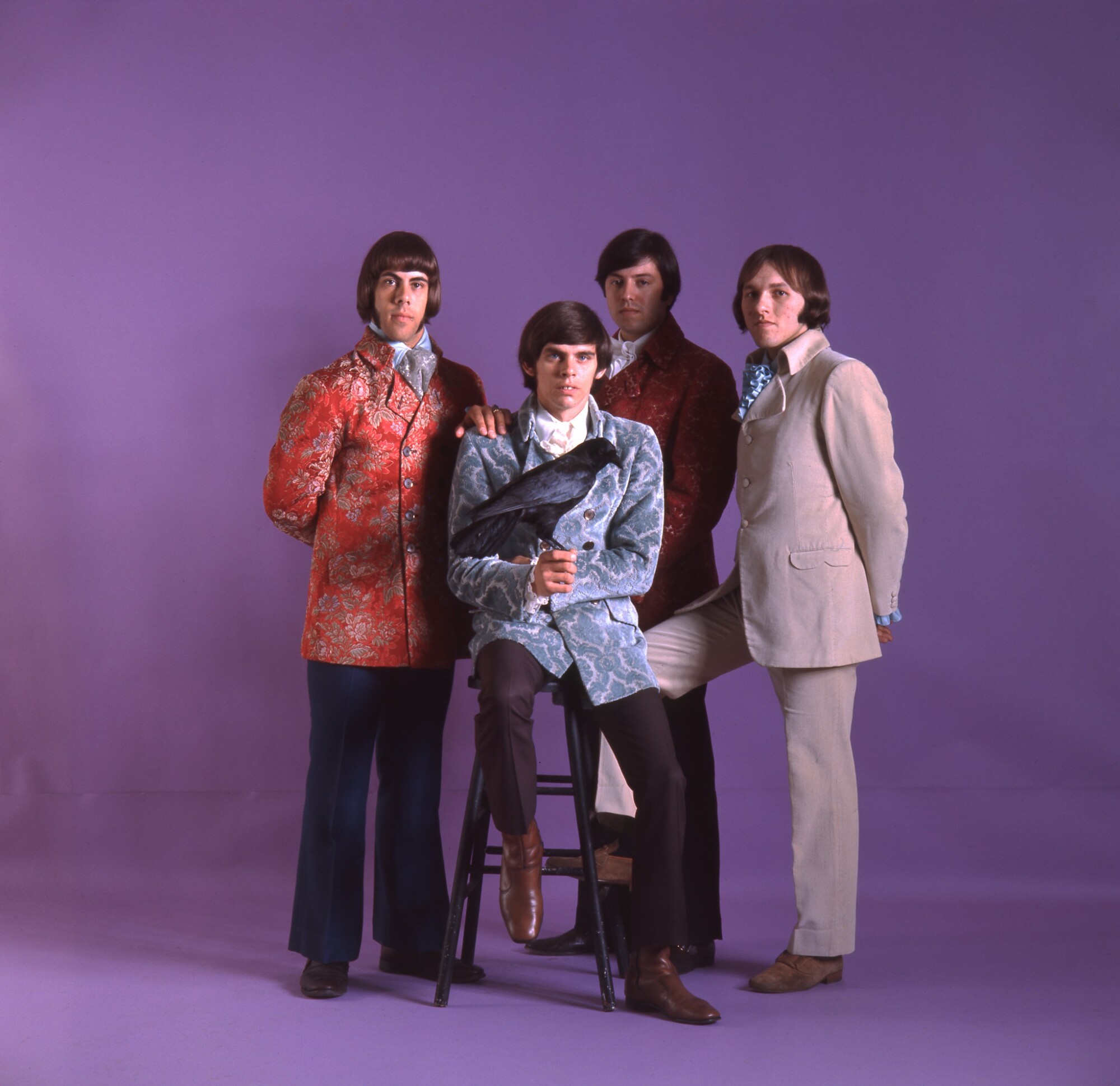
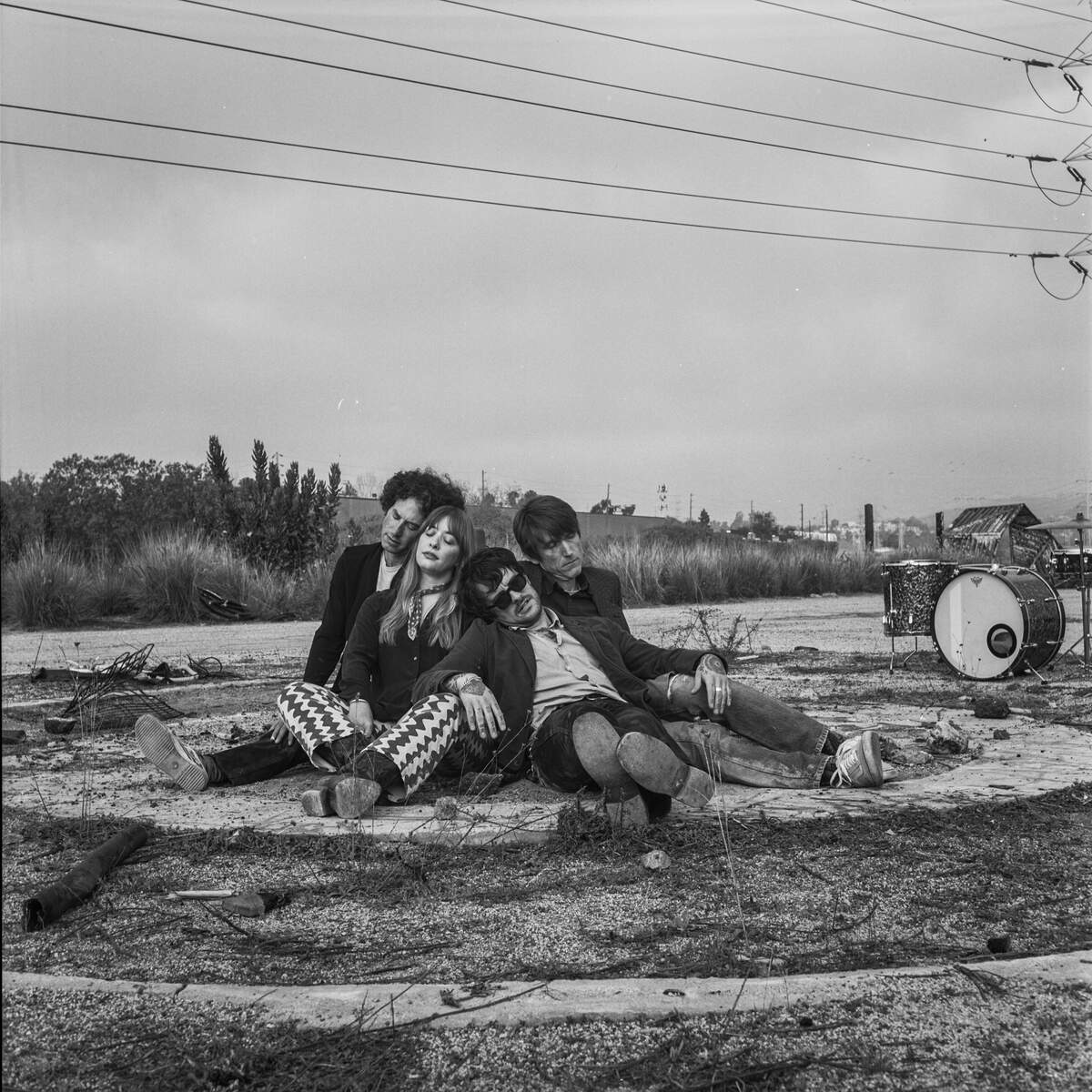
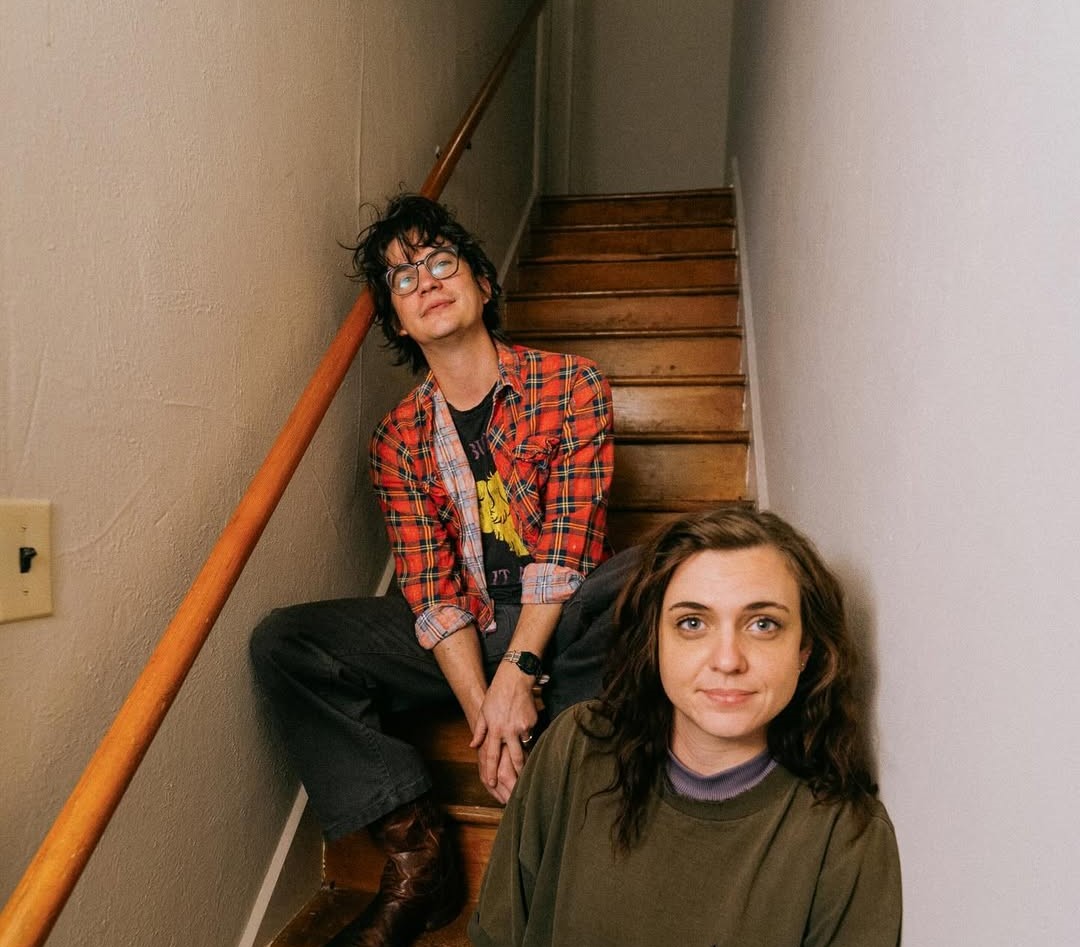
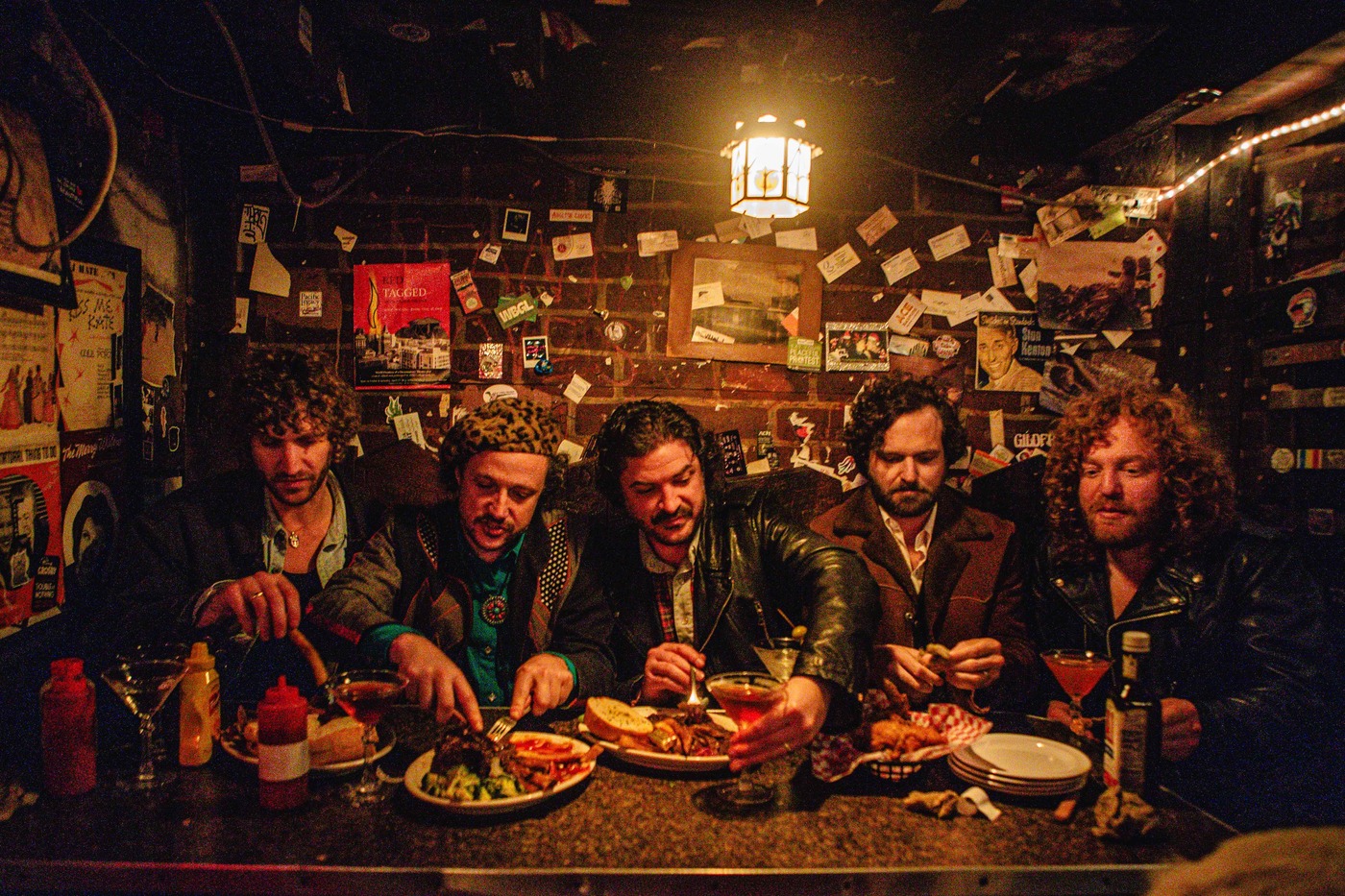
We want to thank Klemen for helping us keep the music and legacy of The Glass Prism alive.